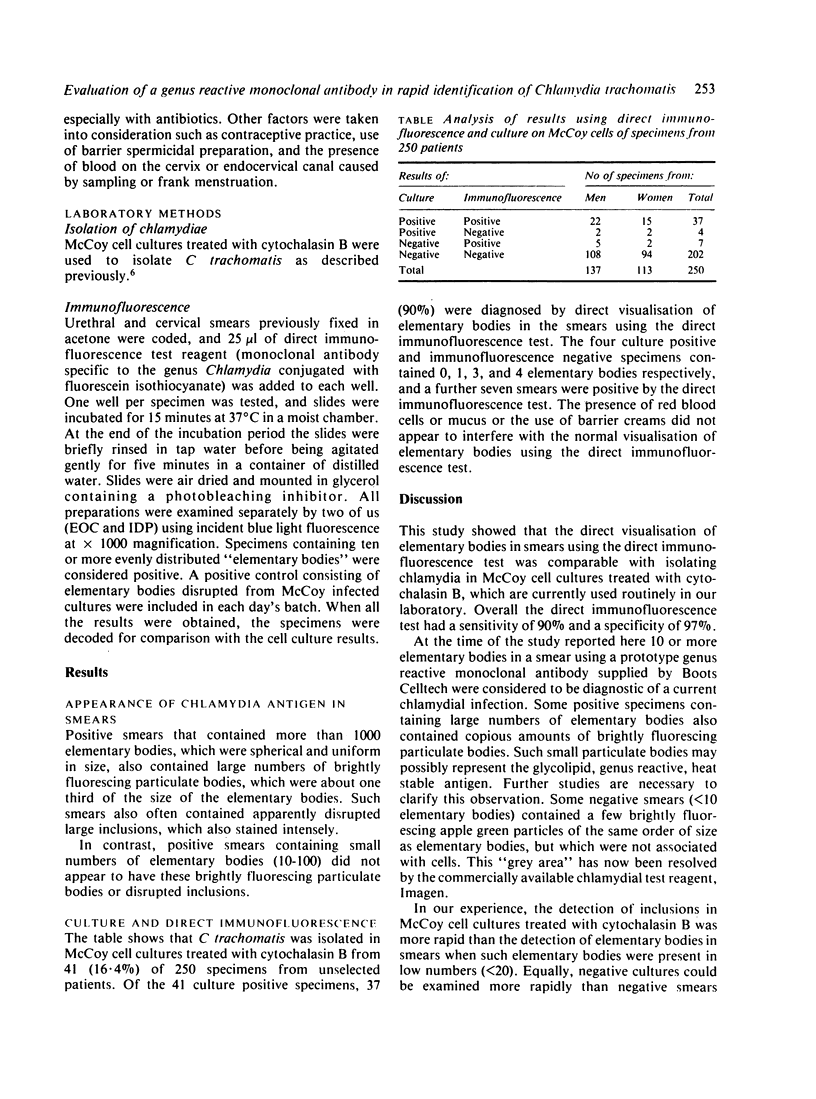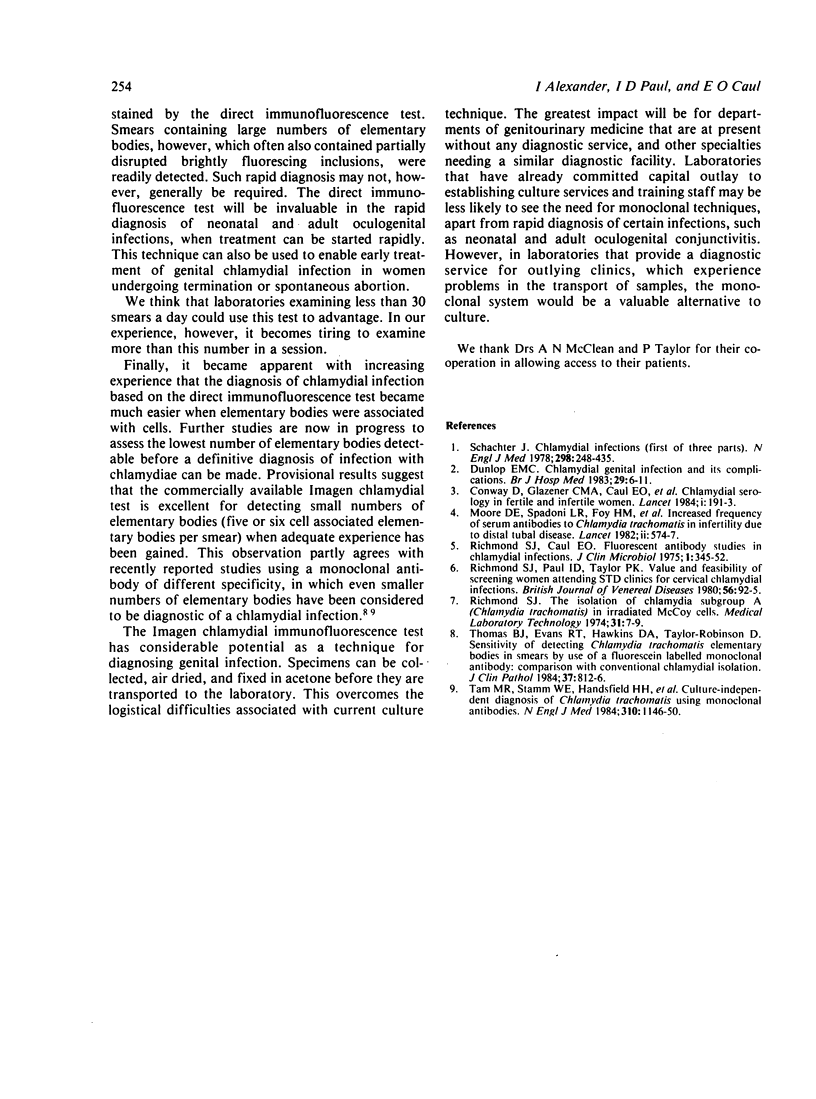Abstract
This study compared the direct visualisation of elementary bodies in urogenital smears by the direct immunofluorescence test with the isolation of Chlamydia trachomatis in McCoy cell cultures treated with cytochalasin B. C trachomatis was isolated from 41 (16.4%) of 250 unselected specimens in McCoy cell cultures treated with cytochalasin B. Of the 41 culture positive specimens 37 (90%) were diagnosed by direct visualisation of elementary bodies in the smears using the direct immunofluorescence test. Four specimens were positive by isolation only and a further seven were positive by the direct immunofluorescence test only. Overall the direct immunofluorescence test had a sensitivity of 90% and a specificity of 97%. The presence of red blood cells or mucus or the use of barrier creams did not appear to interfere with the normal visualisation of elementary bodies using the direct immunofluorescence test.
Full text
PDF


Selected References
These references are in PubMed. This may not be the complete list of references from this article.
- Conway D., Glazener C. M., Caul E. O., Hodgson J., Hull M. G., Clarke S. K., Stirrat G. M. Chlamydial serology in fertile and infertile women. Lancet. 1984 Jan 28;1(8370):191–193. doi: 10.1016/s0140-6736(84)92113-5. [DOI] [PubMed] [Google Scholar]
- Dunlop E. M. Chlamydial genital infection and its complications. Br J Hosp Med. 1983 Jan;29(1):6–11. [PubMed] [Google Scholar]
- Moore D. E., Spadoni L. R., Foy H. M., Wang S. P., Daling J. R., Kuo C. C., Grayston J. T., Eschenbach D. A. Increased frequency of serum antibodies to Chlamydia trachomatis in infertility due to distal tubal disease. Lancet. 1982 Sep 11;2(8298):574–577. doi: 10.1016/s0140-6736(82)90659-6. [DOI] [PubMed] [Google Scholar]
- Richmond S. J., Caul E. O. Fluorescent antibody studies in chlamydial infections. J Clin Microbiol. 1975 Apr;1(4):345–352. doi: 10.1128/jcm.1.4.345-352.1975. [DOI] [PMC free article] [PubMed] [Google Scholar]
- Richmond S. J., Paul I. D., Taylor P. K. Value and feasibility of screening women attending STD clinics for cervical chlamydial infections. Br J Vener Dis. 1980 Apr;56(2):92–95. doi: 10.1136/sti.56.2.92. [DOI] [PMC free article] [PubMed] [Google Scholar]
- Richmond S. J. The isolation of Chlamydia subgroup A (Chlamydia trachomatis) in irradiated McCoy cells. Med Lab Technol. 1974 Jan;31(1):7–9. [PubMed] [Google Scholar]
- Schachter J. Chlamydial infections (first of three parts). N Engl J Med. 1978 Feb 23;298(8):428–435. doi: 10.1056/NEJM197802232980805. [DOI] [PubMed] [Google Scholar]
- Tam M. R., Stamm W. E., Handsfield H. H., Stephens R., Kuo C. C., Holmes K. K., Ditzenberger K., Krieger M., Nowinski R. C. Culture-independent diagnosis of Chlamydia trachomatis using monoclonal antibodies. N Engl J Med. 1984 May 3;310(18):1146–1150. doi: 10.1056/NEJM198405033101803. [DOI] [PubMed] [Google Scholar]
- Thomas B. J., Evans R. T., Hawkins D. A., Taylor-Robinson D. Sensitivity of detecting Chlamydia trachomatis elementary bodies in smears by use of a fluorescein labelled monoclonal antibody: comparison with conventional chlamydial isolation. J Clin Pathol. 1984 Jul;37(7):812–816. doi: 10.1136/jcp.37.7.812. [DOI] [PMC free article] [PubMed] [Google Scholar]


